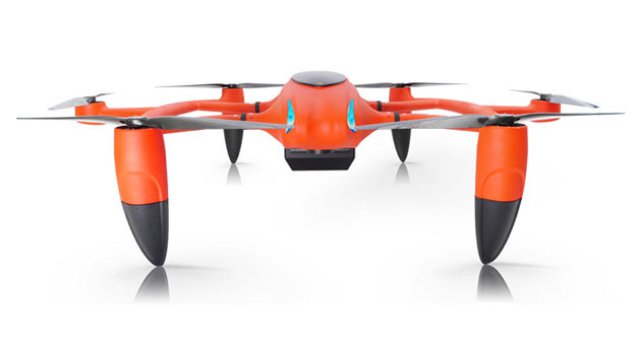This year at FAMEX, Chinese manufacturer MMC introduces its new technology of hydrogen UAS HyDrone 1800 with upgraded specifications to meet higher standards in professional applications. The Feria Aeroespacial México 2017 (FAMEX 2017) kicks off at Mexico City on 26 April.
FAMEX 2017 is a commercial activity in the field of civil and military, aerospace, aeronautics, defense, and security as well as in education, which is held from 26 to 29 April 2017, in the Base Aérea Militar No. 1, in Santa Lucía, Zumpango, México.
The HyDrone 1800 can be utilized in aerial surveillance, reconnaissance, security control, emergency reaction, damage assessment, and other tasks depend on the payload it carries. The light weigh body offers flexible and efficient operation and maintenance during any task.
With maximum wind resistance of 10m/s, rain-proof, high heat-proof carbon fiber fuselage and a double-backup flight control system, this drone can be used in harsh weathers under very stable flight attitude. Meanwhile, with a patented “plug-and-play” mechanism interface, more than hundreds of payloads that under 5 kg could be attached to the platform for various purpose.
“This technology is a new step forward from concept into real applications,” says MMC’s founder Lu Zhi Hui, “It’s safe, it’s effective, it’s proven, and the endurance is unmatched by any other powered multi-rotor UAS in this time.”
The carbon-fiber HyDrone 1800 is an almost indestructible aircraft. Designed for use in the toughest conditions, the drone is wind-resistant, rain-resistant, cold-resistant and still incredibly lightweight. Most importantly, HyDrone 1800’s hydrogen fuel cell technology provides a flight endurance of 4 hours or of a stunning 50+ hours when combined with MMC tethered technology.
The endurance of the hydrogen drone changes the scope of applications dramatically: most military or industrial drones currently on the market are limited by flight times of under 1 hour. HyDrone 1800 achieves the extended flight time while maintaining altitude limits of 4500 meters – competitive or better than other similar sized aircraft – and a payload capacity of up to 5kg.
Hydrogen fuel cell technology is a breakthrough for drones. The technology is an environmentally friendly solution towards a drone industry bottleneck: flight endurance. Constructed for safety and durability, an auxiliary lithium battery starts the fuel cell and provides a backup source of power for the drone. The properties of hydrogen fuel not only allow for extraordinary flight time, but extend the ideal temperature range for operation. Hydrogen drones can be flown in extreme temperatures – from -10 degrees Celsius to 40 degrees Celsius.
Payloads can be changed quickly and easily. Operators may choose from payloads including a thermal imaging camera, low light camera, laser equipment, or zoom camera; making the system ideal for many military applications. HyDrone 1800 can be used for intelligence gathering, border patrol, aerial fire support, laser designation, or battle management services to tactical military operators. MMC also offers packaged solutions in target acquisition and reconnaissance technology (ISTAR).


hydrogen fuel cell drone may be right. Drone would be used for spraying chemical on farm control weeds. Drone able to l5-20 kg would best suited cheers